Daily Practice 2-6
2
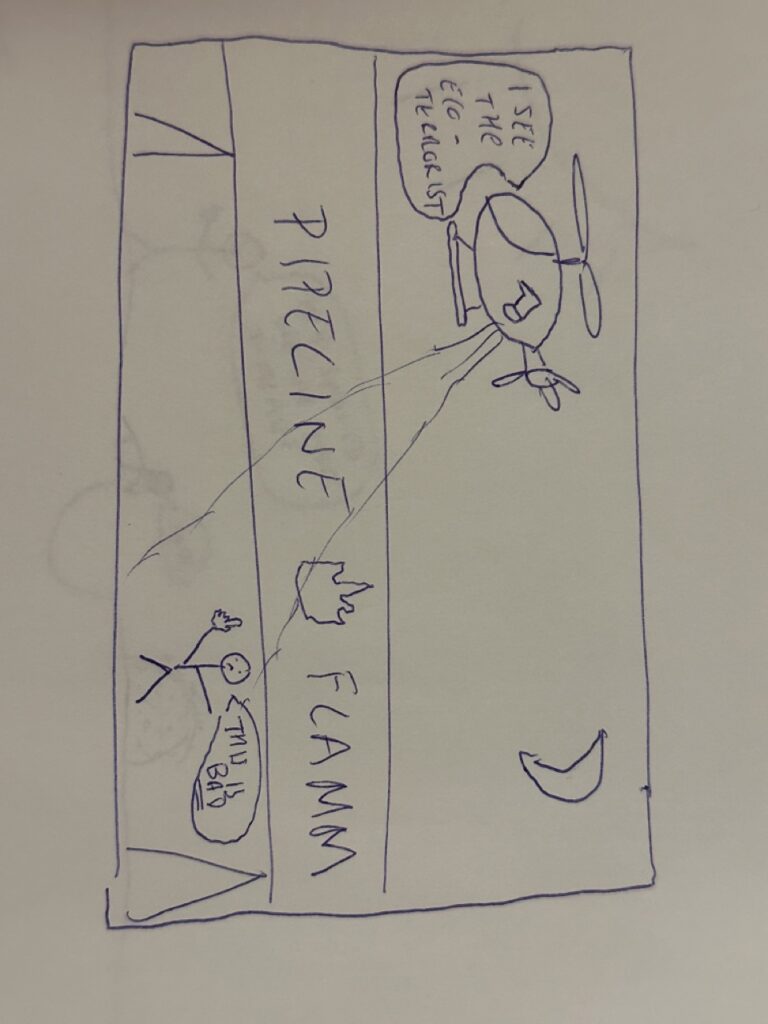
3
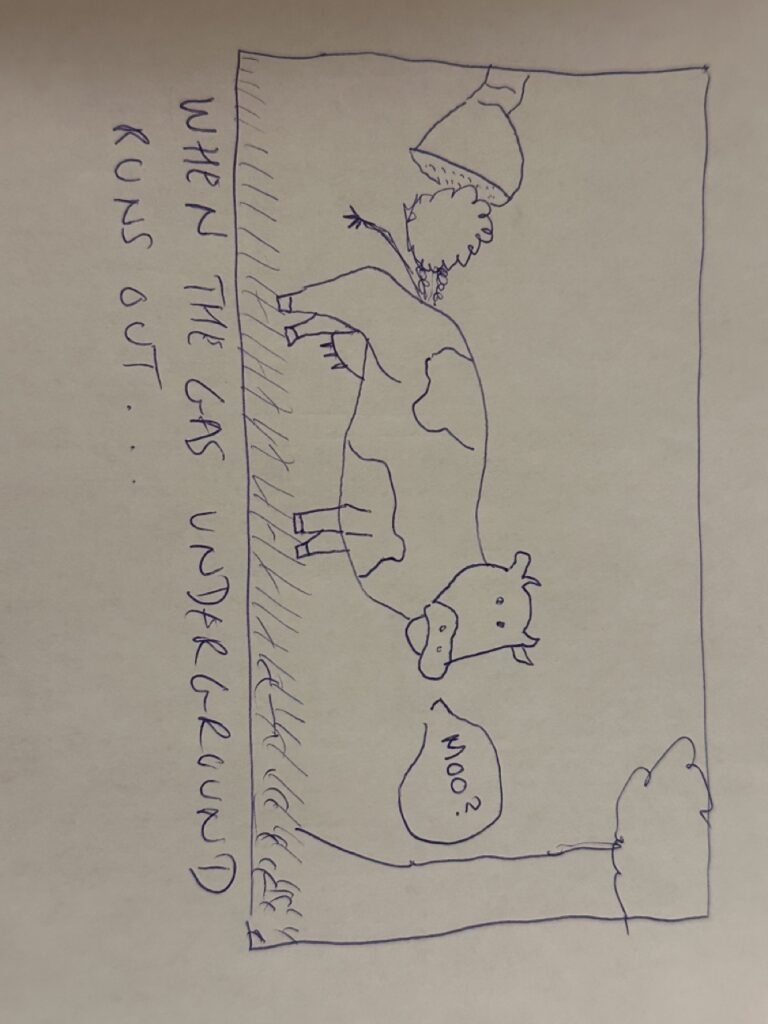
4
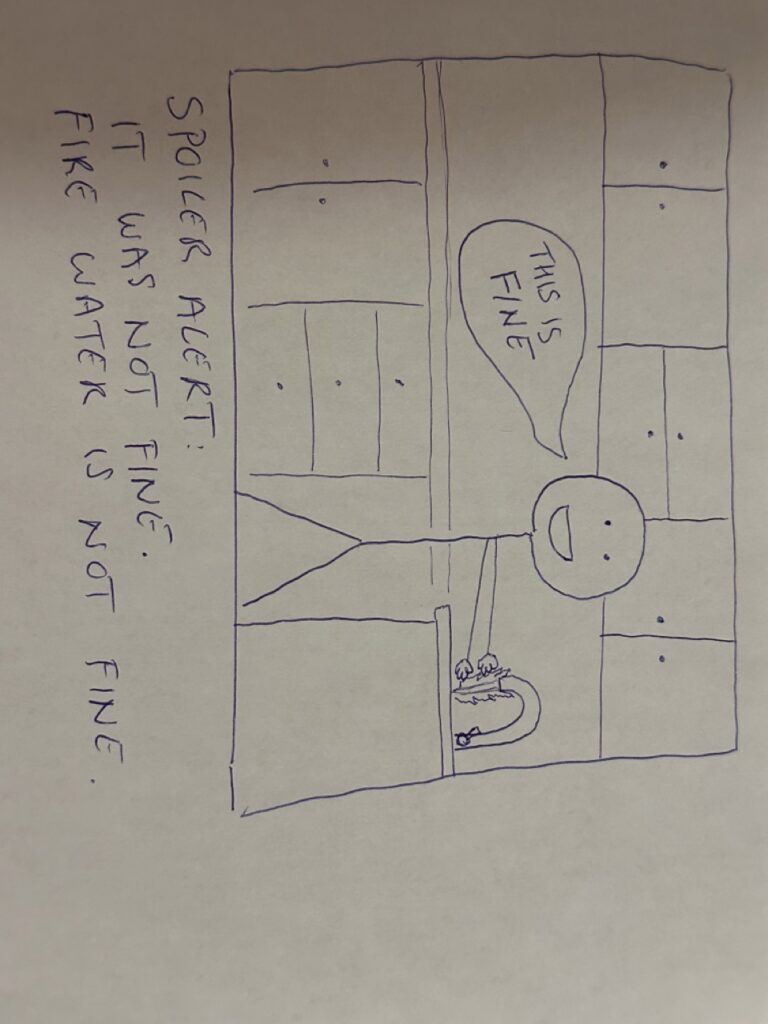
5
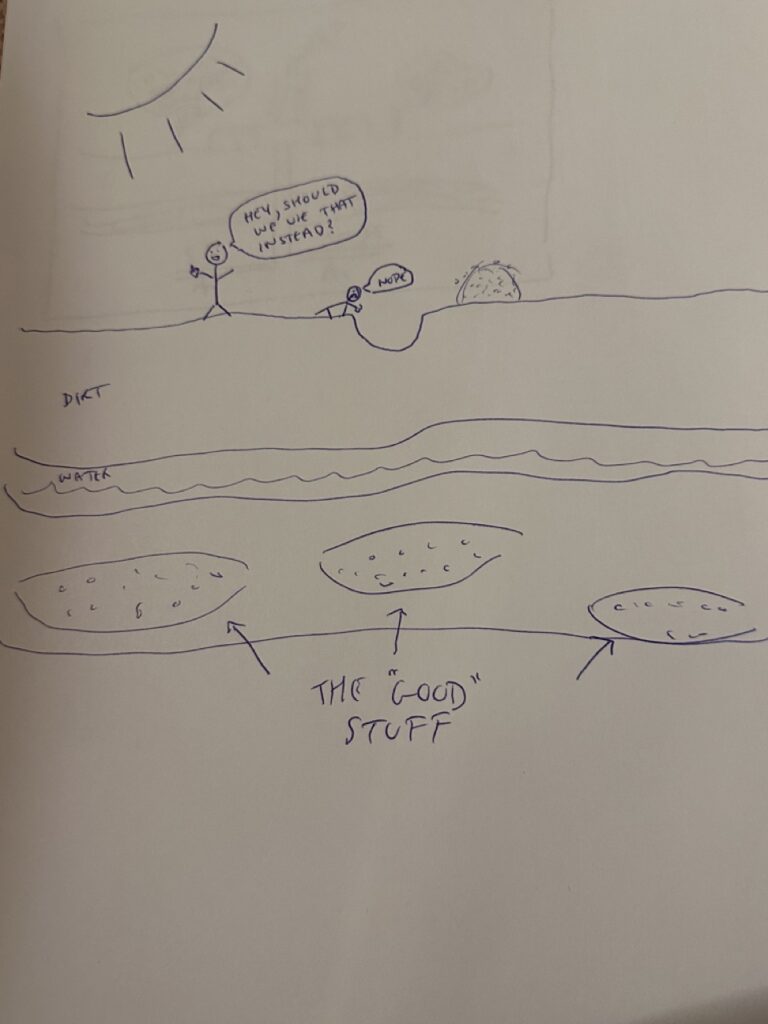
6
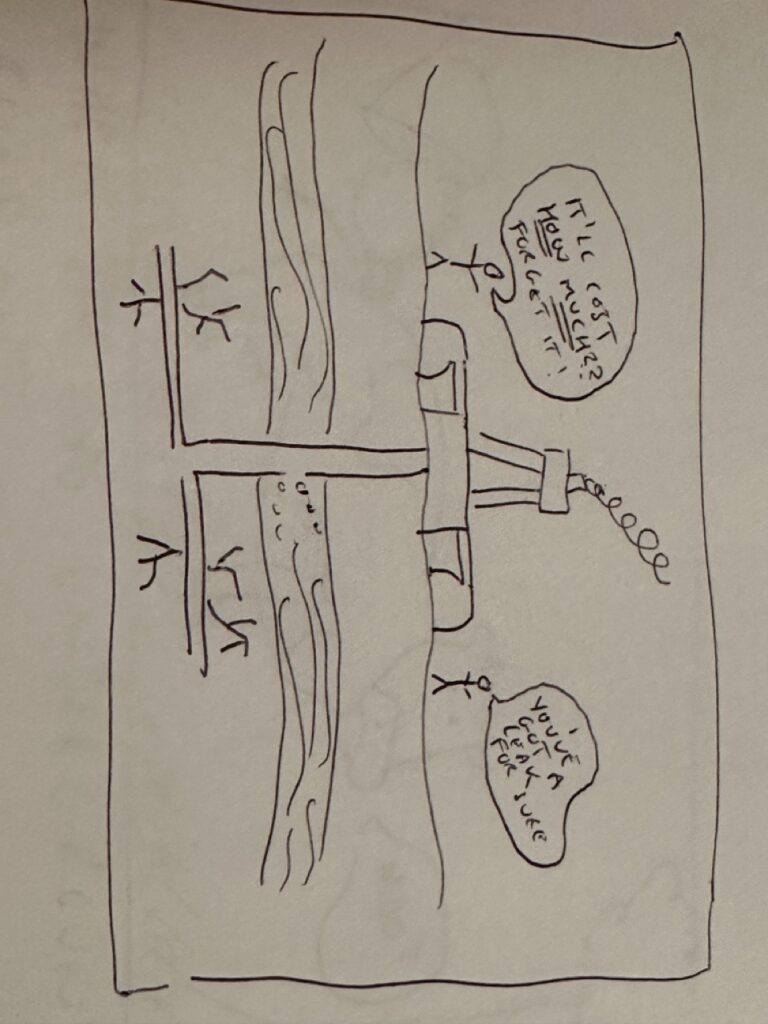
2

3

4

5

6

Watch my Powtoon: Who are you?
The video I made to open my project
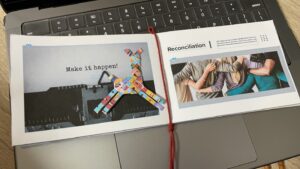
The physical book I made to support my project
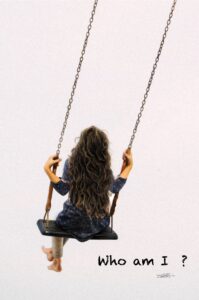
The picture I draw for this project, however, I didn’t use for the final I used all real human being pictured to deliver my theme.
The Art demo I like to post here is the green book, It is a movie, it is talking about a black musician who hired a white driver to drive him to make his music show tour. It is one of the great movies under the color topic. use the drive as the first person to tell the story.
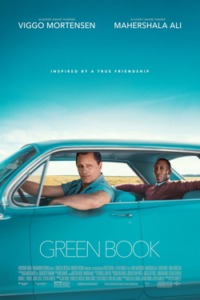
Basic information: Green Book is a 2018 American Biographical comedy-drama film directed by Peter Farrelly.

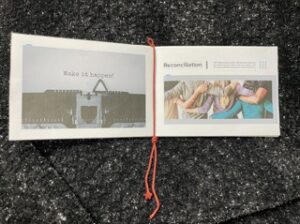

User test: I chose 2 people in my family to go through my mini-book. User one is a 65-year-old female. User Two is a 36-year-old male. User Three is a 19-year-old female, and User four is a 21-year-old male.
User 1: I like how it looks, but the letters were too small and were a little bit hard to read, how about making it bigger? Also, I have the way you rank the information, reasonably.
Use 2: I like the format you made, but I am confused why you them half in colored, and left half in black and white. I have color recognition trouble, I rather you make it all in black and white.
User 3: I don’t like the pictures you made in the book, they are too heavy. But the direction you made for negotiation I think it is very helpful, especially for Asian parents.
User 4: I like it because it is beautiful and very easy to hand out. But I can’t read English, can you make a Korean vision?

For this project I want to display a map for people, who are they, what are those rolls people are playing everyday, but they didn’t notice during daily life, accounting to those rolls that people playing, how much of them are true come from their mind, and how much people can really be who they want, accounting to the research, people’s dream most being impacted from own parents, and parents always stay in their safe zone, and for they the most valuable children they want to pick the most secure way from their safe zone. And That’s the reason why people gave up or lost their own dream or intelligent since very young age. This is project is based on my personal experience, I have a very conservative confusion background family, the way I am going always been selected form my parents, I was a quite good girl did whatever they want, until the day I went aboard and study along, I had saw, smell, heard, learned, and created my own perceptions. I just wake up, and realize life is an experience, always come along, and leave alone, the only thing and be temporary saved, or keep. However with time files, everything will be totally erase off in time river. Life once, so just make it follow your own mind. At the very end I gave 3 direction to negotiate how you want to keep working on your dream or intelligent.
Reference:
Bhagwan, Dada. “Positive Parenting: How to Be a Better Parent: Parent Child Relationship.” Spacer
Bisht, Bhawana. “Dear Parents, Stop Imposing Your Dreams on Your Children.” SheThePeople TV, SheThePeople, 11 Mar. 2020
Doglio, Fernando. “Stop Killing Your Kid’s Dreams for the Future. Why Would You Do That?” Medium, A Parent Is Born, 21 Oct. 2020
Max Jordan Nguemeni Tiako, MD. “‘Parents Kill More Dreams than Anybody’ – Spike Lee.” Medium, Medium, 23 Mar. 2016
“Sometimes, Good Parents Produce Bad Kids.” NPR, NPR, 15 July 2010
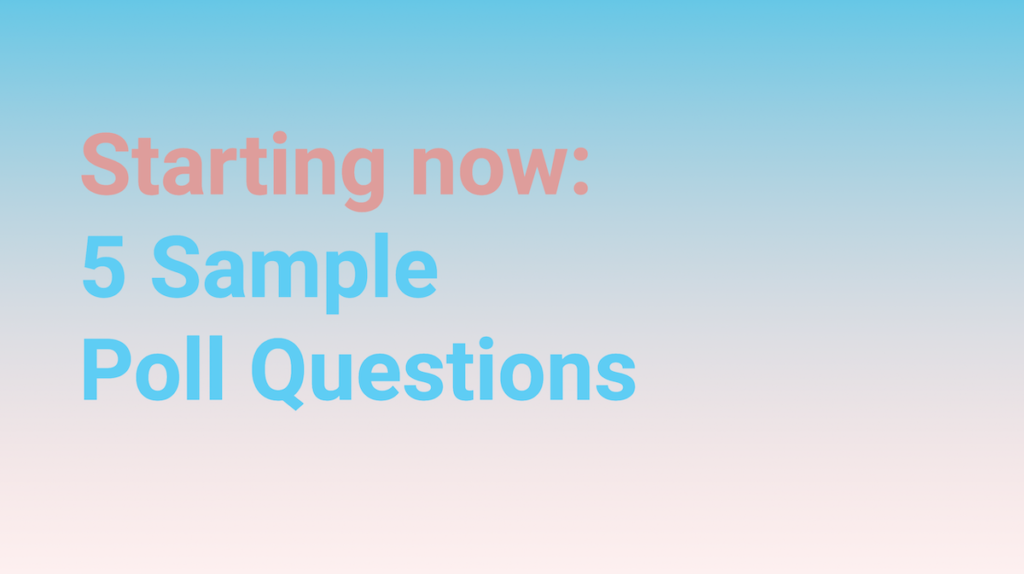
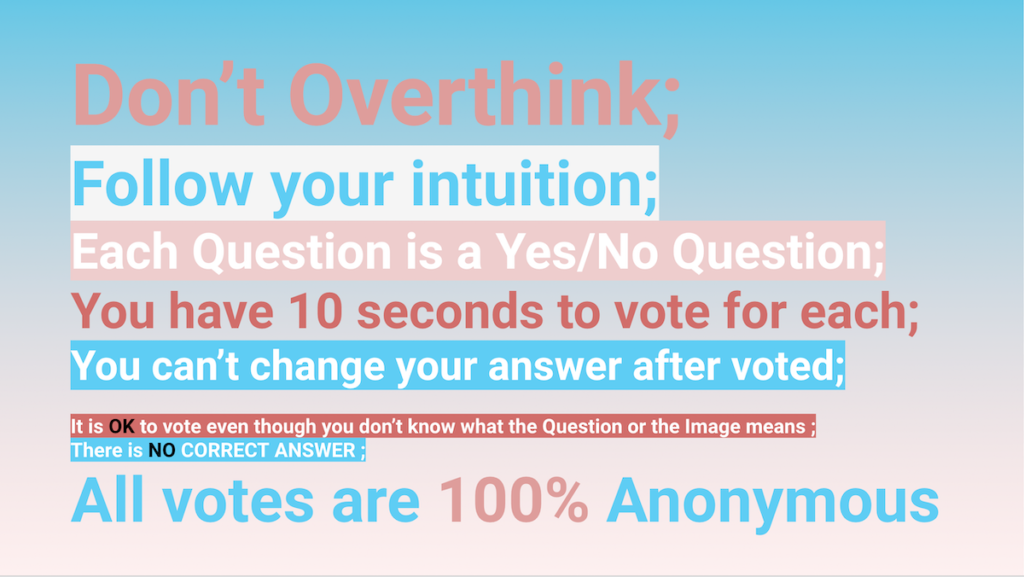
-What did you learn?
User Testing is really helpful and important in developing an experience. More importantly, a more random testing body other than family and friends is going to be a lot more helpful. I was able to spot a lot of issue through user tests, but I think I could have done better if I was brave enough to reach out to more strangers about it.
-What feedback did you receive? Any reflections on critique itself?
Marina Zurkow, the visiting artist brought up the important question of fostering a space for conversation, discussion. I agreed a lot with it, and felt it was something I planned in the project’s “results” section, but failed to deliver during the actual presentation due to nervousness. I wish I could make it a lot more clear in the presentation.
-What might you do differently in terms of process or content?
I will shorten the actual experience part, do 2 questions instead of 5, and make sure I spend more time in explaining the entire experience if possible. I did rehearse my presentation slides, however, I only did it in my head. I really should start rehearsing out loud even though it feels odd at first. That is probably the only way I can get the true or at least a lot more accurate estimate about how things and time might run.
Another big mistake I realized I did, was not having the Poll’s QR Code on slides after the initial introduction. I later found out in chat that some classmates missed the first opportunity to scan the QR code, and thus was not able to participate throughout the entire exercise. I have already made a quick change by including a tiny QR code to the poll on each slides after the initial instruction slide.

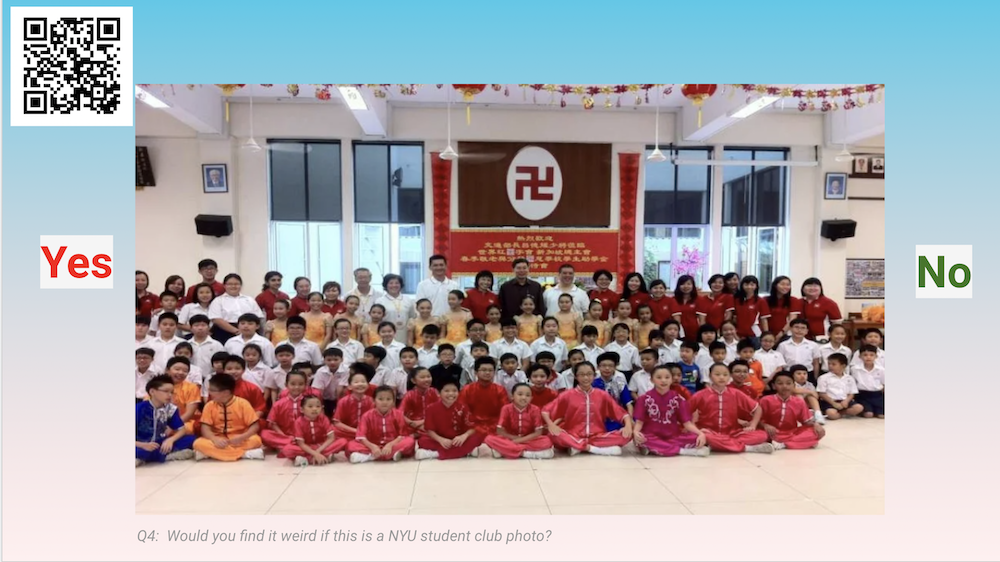
//
Ideally, I wish I can create a tool that I can automatically turned all the polls into instant pie charts for the result section. I was doing everything manually on spot using 2 laptops and a phone during the live presentation: count the vote, generate the pie charts, and put them into the slides. I was not able to multitask as great as I thought I would, so only ended up finishing the first poll on time. I hope I can make this part smoother in future, and thus have time for actual conversation and discussion about the question with the participants.
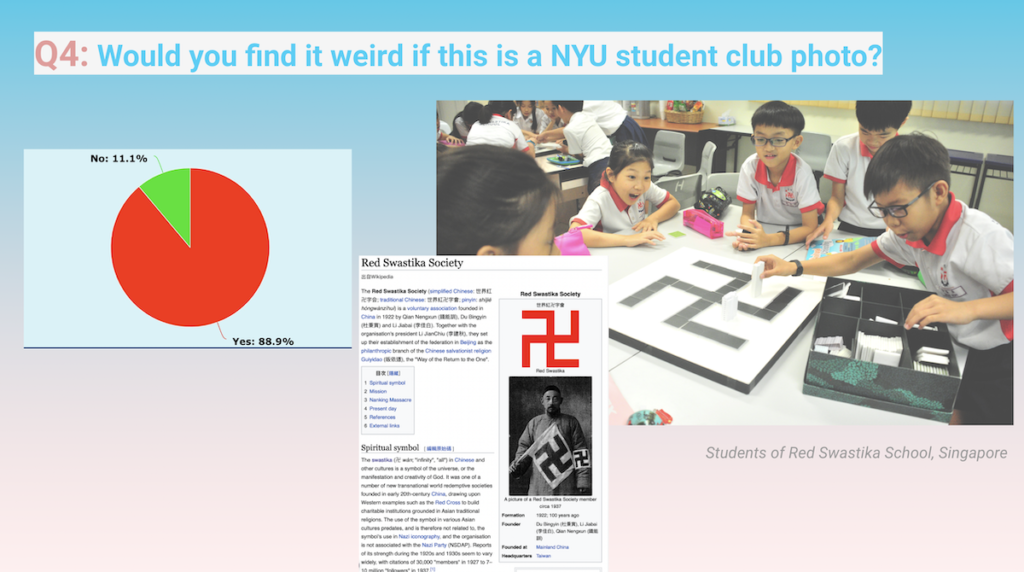
//
I also really wish I present and explain the form, inspirations, and research process more in my presentation. I had 5 slides of curated bibliography that I planned to briefly talk about, hoping to share some of the uncommon knowledge with the audiences.
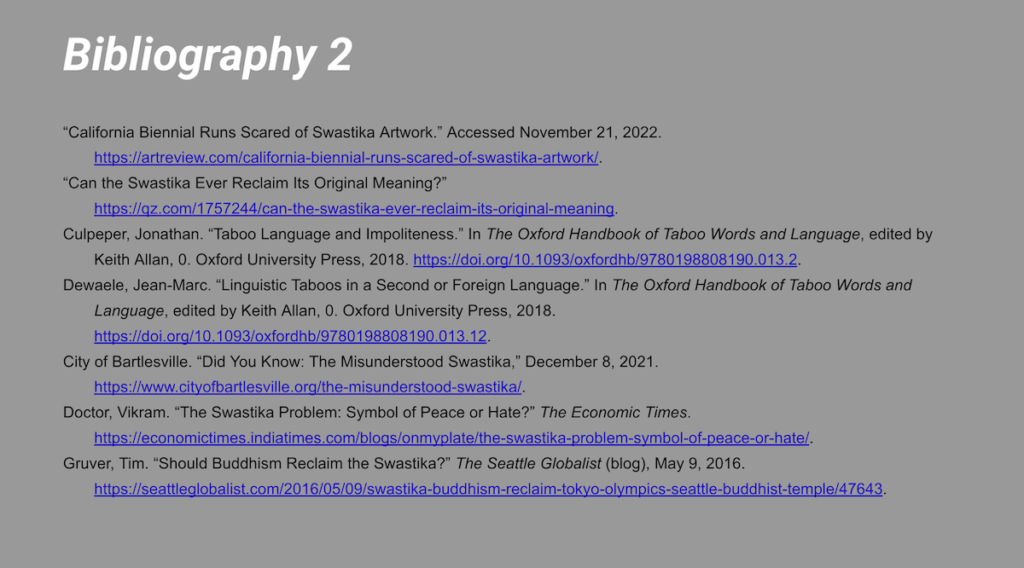
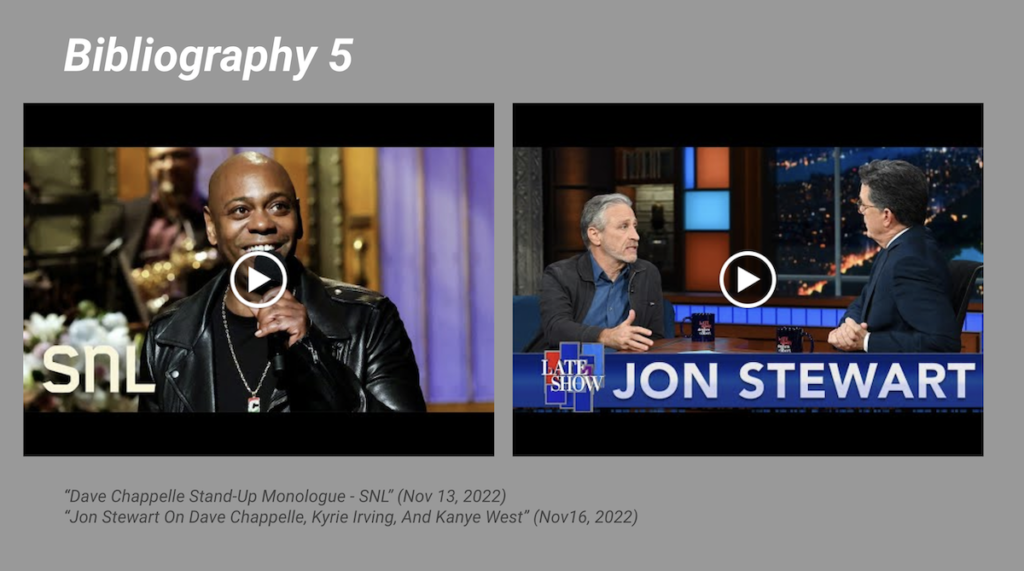
//
-What was inspiring? What parts?
I am not sure how I did with content warning, and how it foreshadow my project experiment. I was inspired in doing it this way by couple of the standup comedies I’ve seen recently. However, I think I can do better with it, and finding a balance in the wording as well as presenting it is tricky.
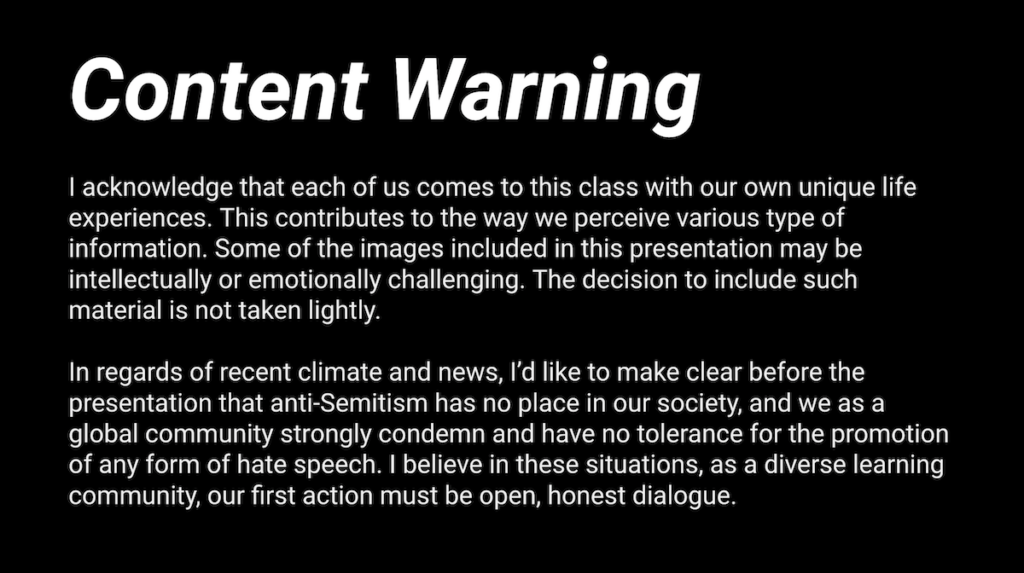
In addition, I was inspired by many other classmates’ works, especially resonate with Elizebeth’s Sunscreen Project, and Nicole’s through and clear walkthrough of her project development.
-Revisit the assignment prompts: how did your project relate to the original prompts, in terms of critical lens, audience, tone, etc…
I think I stay pretty close with the assignment prompts, and especially feel my project does aim to provide an alternative, or hidden history that shifts power structures; as well as facilitated the formation of a new community arising out of an identified need. Hopefully through the simple poll, I can plant the seeds in some people the desire to make a material change, or maybe at least think about history in a broader sense with other cultures in consideration.
-How did you balance research and experimentation? Which is easier for you? How can you focus more on the areas that you shy away from?
Balancing research and experimentation is probably the most difficult part to me as always, I have the tendency and desire to lecture, or maybe even set up doctrine. I needed to constantly reminding myself that “show, don’t tell”, as well as the idea that nothing will be digested by audiences if the food is being forced into their mouths. Subscribing to the concept of having PowerPoint Presentation/Lecture as a form of performance art might be a way for me to blur the line between research and experimentation, but can also feel like cheating, I am not sure (lol).
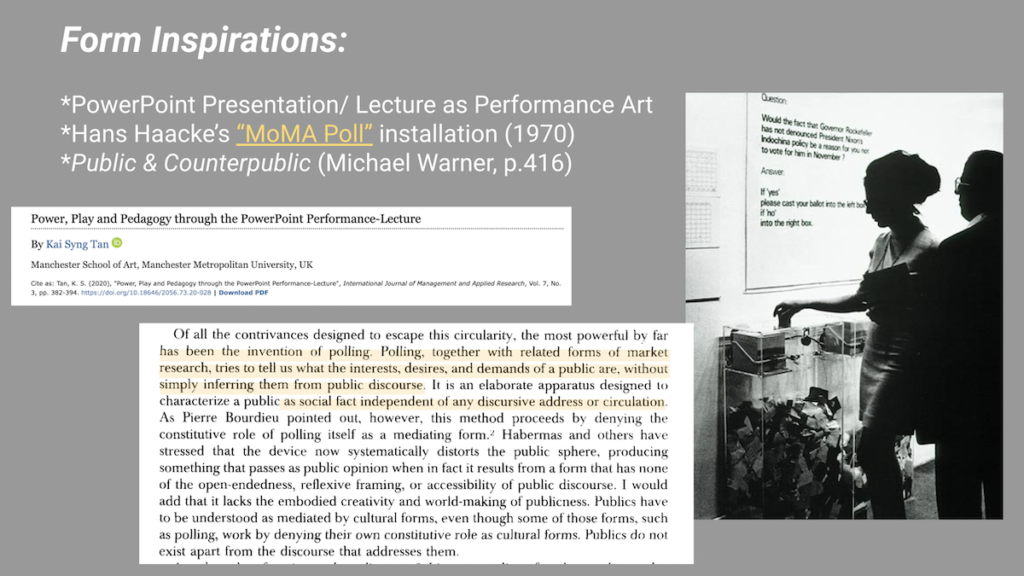
Who created it: Josh Schwartz and Stephanie Savage (and by extension: Cecily von Ziegesar who wrote the book the show is based on)
For whom: The viewer audience of the CW, which at the time aimed to appeal to a public comprised primarily of individuals aged 18 to 34 who identify as female, also to people interested in the idea of New York “High Society”
With what materials and metaphors: TV, for metaphors maybe a race
What impact: The show had a big impact of fashion and culture as a whole. There are a lot of memorable lines that survived to be part of pop culture.
On whom: Mostly on younger people (teens to mid twenties)
How: It became a very popular show with a lot of media coverage. It also spawned sub communities through message boards and social media.
I think they identified a public interested in the lives of the wealthy in NYC. People wanted to know the gossip and be “in” the social circles described in the show. I don’t think there’s really a counterpublic at play.
TV Show: RuPaul’s Drag Race
Creator
RuPaul (Rupaul Andre Charles)
Created for:
Primarily – at least in the beginning, now it’s more mainstream – for gay men/drag queens and people interested in/passionate about drag culture.
Materials:
Television (Video, Audio, etc)
Metaphors:
Pageant
Impact:
It caused a lot of cis/heteronormative people to become more interested in LGBTQ+ communities/allyship. It also brought drag culture to the mainstream and helped drag earn more respect as an art form/mode of self expression.
How was this impact created:
The show became very popular because of the personalities of the drag queens and the competition format. Having a beauty pageant also promoted the idea of drag queens as beautiful which shifted the way people viewed the marginalized community.
Did it form a public/couterpublic:
I think that a counterpublic (drag) became more of a public as a result of the show. The drag community itself remains a counterpublic, but the show has a massive fanbase which brings it more into a public sphere.
Topic Overview:
My topic investigated the process of what solidifies events, stories, and points of view as “history,” focusing on the below questions:
My intended output/form for this project was to empower more stories, contexts, and perspectives to be shared to fully inform how certain events or movements impacted and shaped the experience for different communities as a societal whole rather than through a specific lens.
Research & Process:
Bibliography: